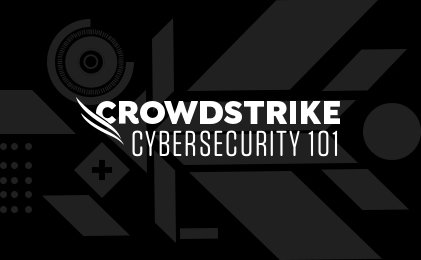









The Cloud Security Monitoring System market is a rapidly growing sector in the IT-telecom industry, with a focus on leveraging data for business growth and progress [abcc15ca]. This market research report provides an overview of the market, highlighting its definition, applications, development, and manufacturing technology [abcc15ca]. The report emphasizes the importance of staying informed about market trends and developments to maintain competitiveness [abcc15ca]. Analytical tools like SWOT analysis and Porter's Five Forces analysis are utilized to assess profit potential for buyers and suppliers [abcc15ca]. The report also provides insights into recent market developments, challenges, and strategies for decision-making [abcc15ca].
In a recent article by Infosecurity Magazine titled 'Elevating Your Defense Strategy with Cloud Security Posture Management', the challenges organizations face in maintaining a robust security posture in the cloud are discussed [5dd4f265]. The article highlights the importance of Cloud Security Posture Management (CSPM) in addressing these challenges and adapting to the evolving threat landscape [5dd4f265]. It explains that CSPM is a set of best practices that help organizations configure and manage their cloud resources securely [5dd4f265]. The article outlines the reasons why CSPM is essential, including safeguarding sensitive data, ensuring compliance with regulations, and preventing security incidents [5dd4f265]. It also discusses the benefits of implementing CSPM, such as achieving a consolidated view of cloud assets and configurations, ensuring regulatory compliance, and streamlining security procedures through automation [5dd4f265]. The article concludes by emphasizing the necessity of prioritizing cloud security and adopting platforms that facilitate effective CSPM to mitigate risks and protect valuable data and assets [5dd4f265].
Cloud computing is becoming cost-effective for organizations of all sizes [4ea09516]. However, data security in cloud computing is a concern [4ea09516]. Cloud security requires unique strategies due to shared and virtualized resources [4ea09516]. Zero-trust security is a modern approach that continuously verifies and grants access levels as needed [4ea09516]. Containers and serverless computing reduce the attack surface and improve efficiency [4ea09516]. AI and ML algorithms in the cloud provide solutions to security issues and enable rapid responses to threats [4ea09516]. Blockchain enhances data security in cloud computing by creating a tamper-proof record of data transactions [4ea09516]. Popular strategies to strengthen security include strict control over user identities, data encryption, automated monitoring, vulnerability assessments, security audits, and employee training [4ea09516]. The demand for cloud professionals is increasing as more companies transition to the cloud [4ea09516]. The C|CSE course equips professionals with cloud security best practices and practical experience in dealing with real-world cloud security risks [4ea09516].
Stats N Data has released a comprehensive report on the Managed Security Operations Center (SOC) market, providing revenue forecasts, competitive landscape analysis, and insights for stakeholders [9d5ad18a]. The report segments the market based on type, product, and end user, offering an accurate description [9d5ad18a]. It also includes future forecasts to guide data-driven decision-making and navigate market evolution [9d5ad18a].
Identity Security Posture Management (ISPM) is a proactive approach to security that involves monitoring and analyzing identities, access rights, and authentication processes across an organization's entire ecosystem [01393573]. It provides insights into identity risk profiles and guidance on how to mitigate that risk [01393573]. ISPM helps prevent breaches by addressing identity-based vulnerabilities, reducing the attack surface, and implementing multi-factor authentication [01393573]. It is important to have end-to-end visibility across the identity landscape, including users, machines, service accounts, and more [01393573]. Organizations can conduct regular risk assessments to identify vulnerabilities and take steps to mitigate them [01393573]. CrowdStrike offers a comprehensive identity security solution that supports ISPM, Cloud Infrastructure Entitlement Management (CIEM), and Identity Threat Detection and Response (ITDR) frameworks [01393573]. This solution provides real-time protection against identity-based attacks and offers instant visibility into the entire identity landscape [01393573].
Organizations worldwide are migrating to the cloud to achieve business goals. The migration of workloads to public cloud environments exposes organizations to new attack vectors [c8f01b53]. American Financial, Fidelity, Hartford Financial, and Truist Financial have implemented security measures to protect their systems and data [c8f01b53]. Cloud environments are vulnerable to cyber risks due to excessive permissions and entitlements [c8f01b53]. Traditional IAM solutions are no longer adequate for managing access and entitlements in the cloud [c8f01b53]. A cloud-agnostic Cloud Infrastructure Entitlements Management (CIEM) tool is needed to manage identity permissions and rights across cloud environments [c8f01b53]. Check Point offers a CIEM solution called CloudGuard as part of its Cloud-native Application Platform (CNAPP) [c8f01b53]. CloudGuard provides unified visibility and control over access and entitlements across multi-cloud environments [c8f01b53]. It helps organizations visualize, identify, prioritize, and remediate IAM risks and compliance violations [c8f01b53]. Organizations should consider adopting a cloud-agnostic CIEM solution like CloudGuard to enhance their cloud IAM and zero-trust security strategy [c8f01b53].
Classified computing environments are traditionally on-premise datacenters, but the cloud is crucial for expanding applications and data. The migration roadmap starts with defining desired outcomes and identifying system management services. Then, the organization's current digital state and alignment are assessed. The next step is building a 'landing zone' that defines the new environment. Finally, the migration strategy involves either a 'lift and shift' approach, 'lift and optimize' for key improvements, or fully modernizing to cloud-native applications. Change management and measuring metrics like total cost of ownership and time and resource savings are important. The cloud environment allows for faster implementation and upgrades, moving costs from CapEx to OpEx. The cloud also enables faster innovation, scalability, and adaptability. Moving mission workloads to protected cloud environments is crucial for maintaining a competitive advantage [e90ab3e9].
Remote monitoring and management (RMM) is a technology used by IT departments to oversee and administer IT systems remotely [b479ecea]. RMM allows a centrally located team to address IT concerns globally and is often used by managed service providers [b479ecea]. RMM brings advantages in terms of monitoring for vulnerabilities and pushing security updates, but it also poses security risks if not properly secured [b479ecea]. Strict access control policies and data encryption are emphasized as important security considerations for RMM [b479ecea].
Hybrid cloud environments present several security challenges that organizations need to manage effectively [f3ae6b53]. These challenges include vendor compatibility, network integration, API security, data protection, visibility and monitoring, security responsibilities, compliance and governance, and the skills gap [f3ae6b53]. To address these challenges, organizations can adopt various strategies and solutions [f3ae6b53]. They can dedicate cloud skills to manage the hybrid cloud environment effectively [f3ae6b53]. Cloud security posture management (CSPM) tools can be used to ensure security configurations are properly implemented across the hybrid cloud infrastructure [f3ae6b53]. Implementing a rapid maturity assessment can help organizations evaluate the maturity of their cybersecurity model and identify vulnerabilities [bed339ee]. Rapid maturity assessments measure an organization's IT environment against the Zero Trust Maturity Model, which includes five core pillars: multifactor authentication, identity lifecycle management, visibility into user behavior analytics, identity and credential administration, and risk assessment [bed339ee]. By catching vulnerabilities and demystifying the complexity of zero trust, rapid maturity assessments enable organizations to evaluate their zero-trust maturity and prioritize cybersecurity projects [bed339ee]. They are particularly useful for organizations early in their zero trust adoption and can help prevent data losses and cyber risks [bed339ee]. Three out of every 4 breaches involve human error, highlighting the importance of zero trust, which requires users and devices to prove their identities before accessing a network [bed339ee].
[abcc15ca] [5dd4f265] [4ea09516] [9d5ad18a] [01393573] [c8f01b53] [e90ab3e9] [b479ecea] [f3ae6b53] [bed339ee]